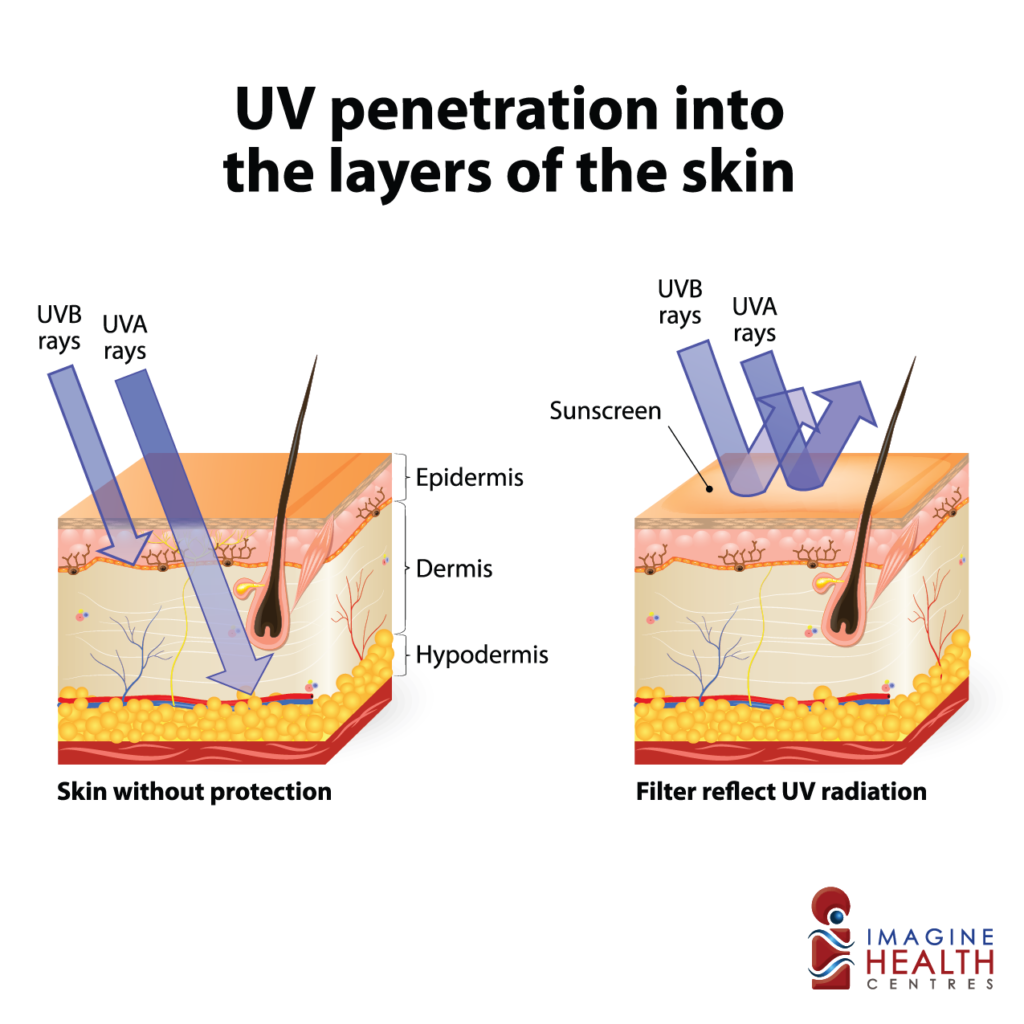UV Awareness Month – Strength of UV Rays
The strength of the UV rays reaching the ground depends on a number of factors, such as:
- Time of day: UV rays are strongest between 10 am and 4 pm.
- Season of the year: UV rays are stronger during spring and summer months. This is less of a factor near the equator.
- Distance from the equator (latitude): UV exposure goes down as you get further from the equator.
- Altitude: More UV rays reach the ground at higher elevations.
- Cloud cover: The effect of clouds can vary. Sometimes cloud cover blocks some UV from the sun and lowers UV exposure, while some types of clouds can reflect UV and can increase UV exposure. What is important to know is that UV rays can get through, even on a cloudy day.
- Reflection off surfaces: UV rays can bounce off surfaces like water, sand, snow, pavement, or grass, leading to an increase in UV exposure.
- The amount of UV exposure a person gets depends on the strength of the rays, the length of time the skin is exposed, and whether the skin is protected with clothing or sunscreen.
People who live in areas with year-round, bright sunlight have a higher risk of skin cancer. Spending a lot of time outdoors for work or recreation without protective clothing and sunscreen increases your risk.
The pattern of exposure may also be important. For example, frequent sunburns in childhood may increase the risk for some types of skin cancer many years or even decades later.
Skin cancers are one result of getting too much sun, but there are other effects as well. Sunburn and tanning are the short-term results of too much exposure to UV rays and are signs of skin damage. Long-term exposure can cause early skin ageing, wrinkles, loss of skin elasticity, dark patches (lentigos, sometimes called age spots or liver spots), and pre-cancerous skin changes (such as dry, scaly, rough patches called actinic keratoses).
The sun’s UV rays increase a person’s risk of cataracts and certain other eye problems, too. They can also suppress the skin’s immune system. Darker-skinned people are generally less likely to get skin cancer than light-skinned people, but they can still get cataracts and immune suppression.
Content courtesy the American Cancer Society website www.cancer.org

